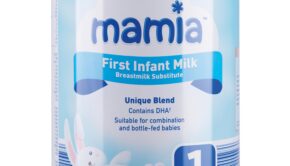Competition Authority wants retail space caps lifted

Grocery Monitor Report makes seven recommendations for a retail planning system which “limits competition” to be improved
13 September 2008
The Competition Authority has recommended that caps on the retail space of stores be lifted. In its third ‘Grocery Monitor’ report released on 10 September the authority made seven recommendations on how the retail planning system could facilitate greater competition. Currently, believes, “The retail planning system limits competition among grocery retailers and as a result consumers are not getting the best possible choice or value for money.”
The authority wants to see the caps for grocery retail stores, which are set at 3,500 m sq within the greater Dublin area and at 3,000 m sq outside Dublin, removed. The report substantiates findings on planning permission outlined by RGDATA’s recently published retail space report. It states that: “since 2001, while grocery retailers have been frequently required by the planning system to curtail the size of their outlets, the number of cases where the retail caps were at issue was relatively few.”
The Competition Authority believe the caps’ “real effect on competition” is to have deterred the most price aggressive grocery retailers from entering the market. The report also states, “The present limit…protects existing retailers at the expense of Irish consumers. Limiting floorspace means that Irish consumers experience less choice (for example, less competition between brands due to lack of shelving space) and, higher prices.”
Factoring in ‘trade diversion’ is anti-competitive
Another recommendation in the report deals with ‘retail impact assesments’, which must accompany retail planning applications, estimating how much trade will be diverted from existing retail centres by the proposed new development.
The Competition Authority believes that the possibility of customers shopping at a different outlet is what drives retailers to provide maximum value and service. If retailers are effectively cushioned from this possibility, it is giving them “market power to charge higher prices than might otherwise be the case,” said the report.
Guidelines discriminate agaisnt discounters
The Competition Authority believes that planning authorities appear to regard “as a binding limit” what is in fact just a description of a ‘normal discount food store’ in Retail Planning Guidelines. These state that discounters are “of a size normally between 1,000 m sq and 1,500 m sq”. The authority is unsure whether this is an intended or unintended effect of the Retail Planning Guidelines. In any case, it believes “the differential treatment of discount food stores based on pricing strategies is unjustified.”
Three’s a crowd
The authority would also do away with third party appeals in the planning application process. According to the report these appeals although facilitated in Ireland, are unusual across Europe. It states they “prolong the planning process by, on average, 50%.” This in turn raises the cost of entry into the market, and so the Competition Authority recommends that further research be undertaken with a view to limiting grounds for appeals by competitors.
Comfort confers power on retailers
The report concludes that, “New retailers, and even the threat of new retailers, are what drive established retailers to provide their customers with the best possible value. Allowing retailers to have a certain comfort that their
markets will be protected, that their turnover is in some sense guaranteed, in effect confers market power on those retailers.”
While the authority concedes that, “Competition and the associated consumer value that goes with competitive markets, is not the only objective facing society… [nevertheless] greater cognisance of the impact that planning can have on competition, and therefore on prices and consumer value, is warranted.”



 Print
Print






Fans 0
Followers